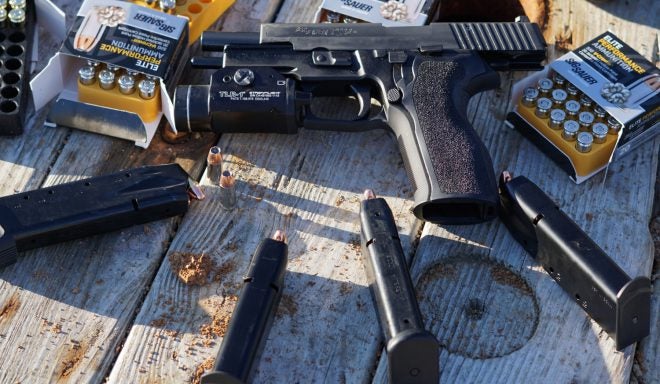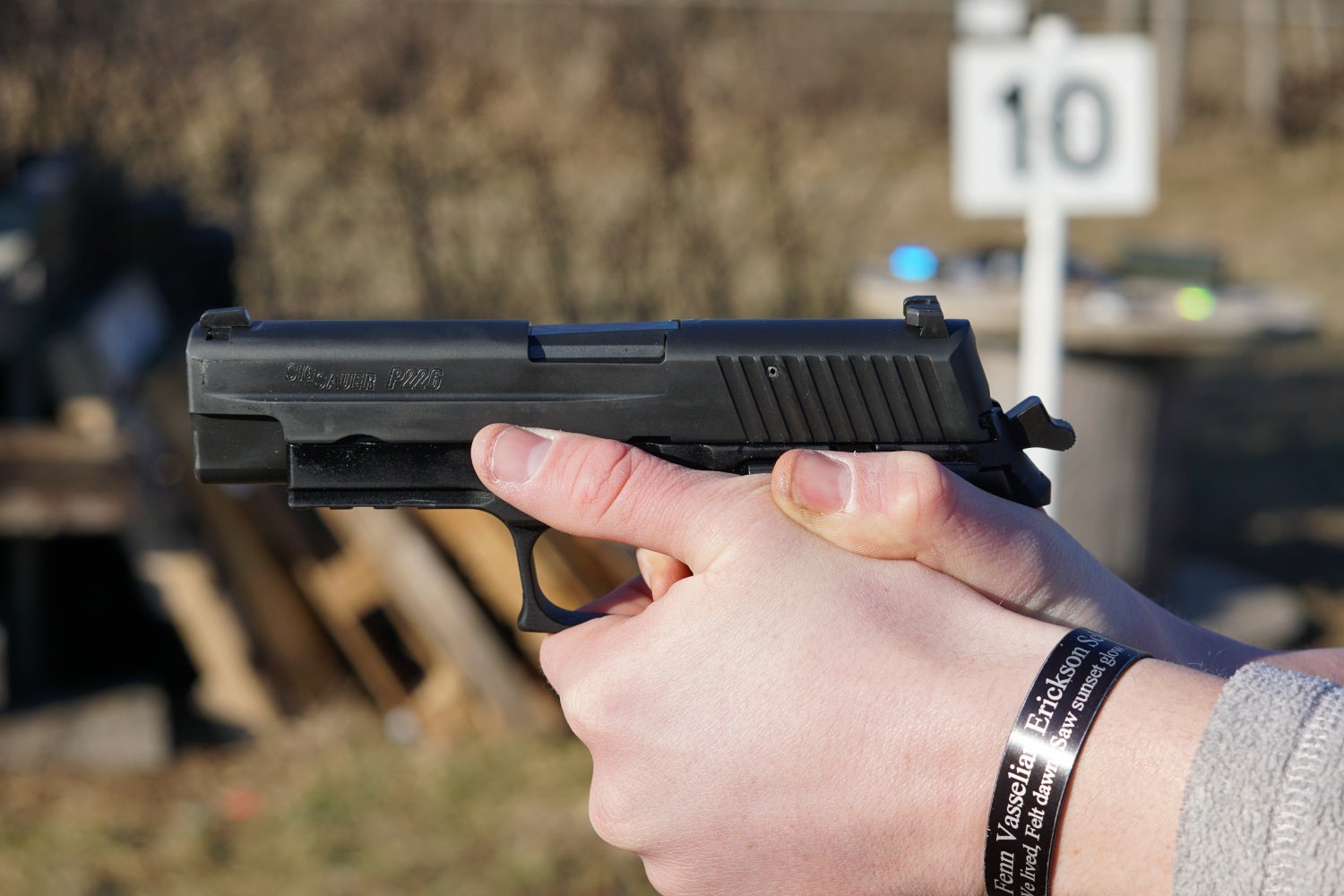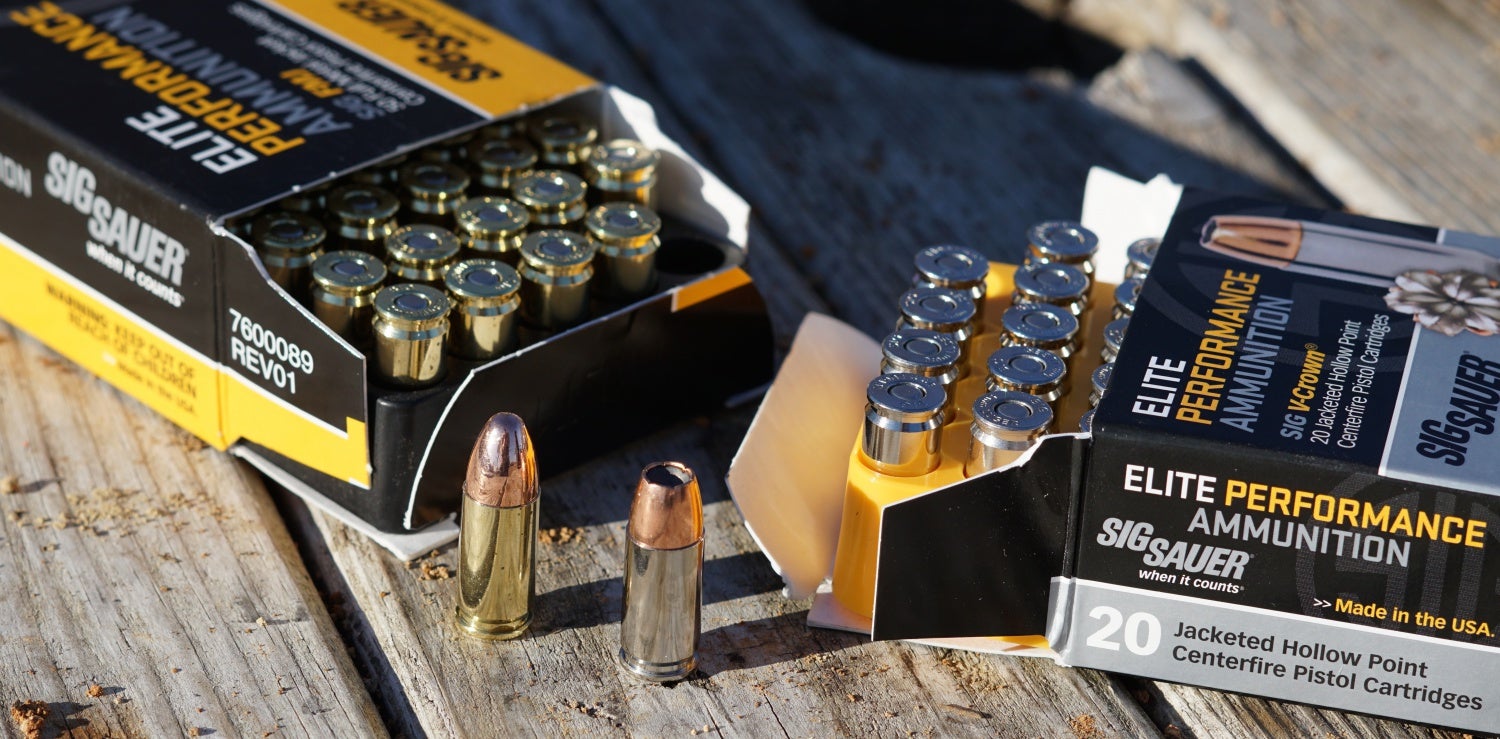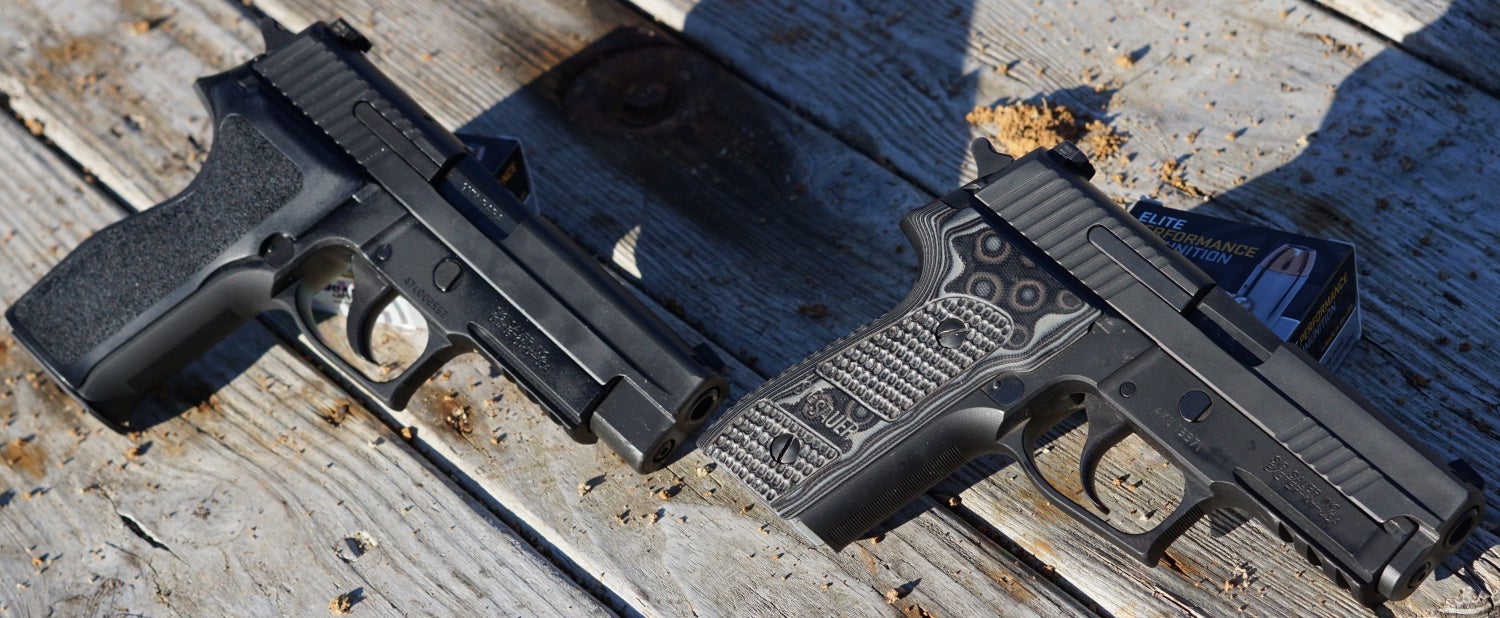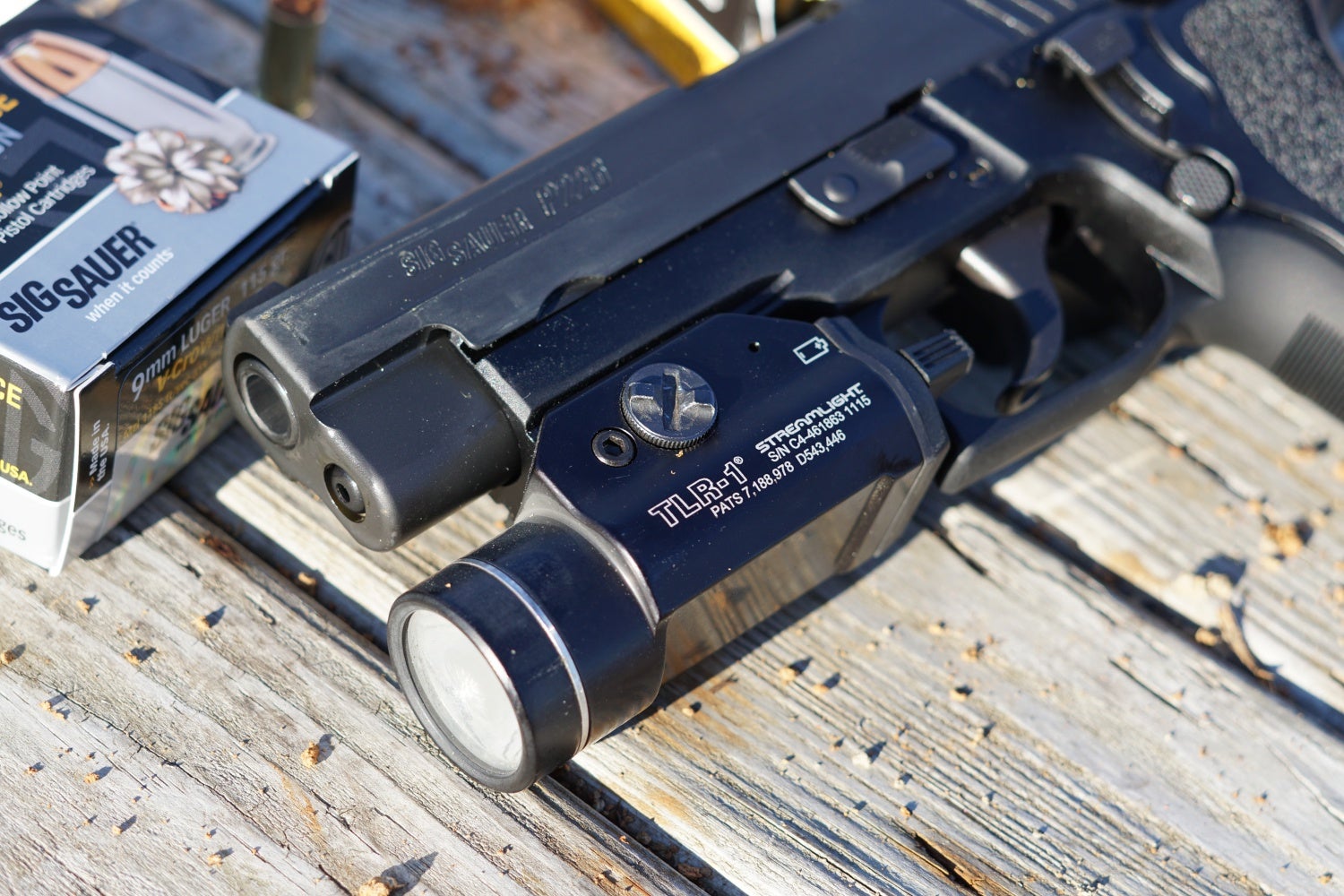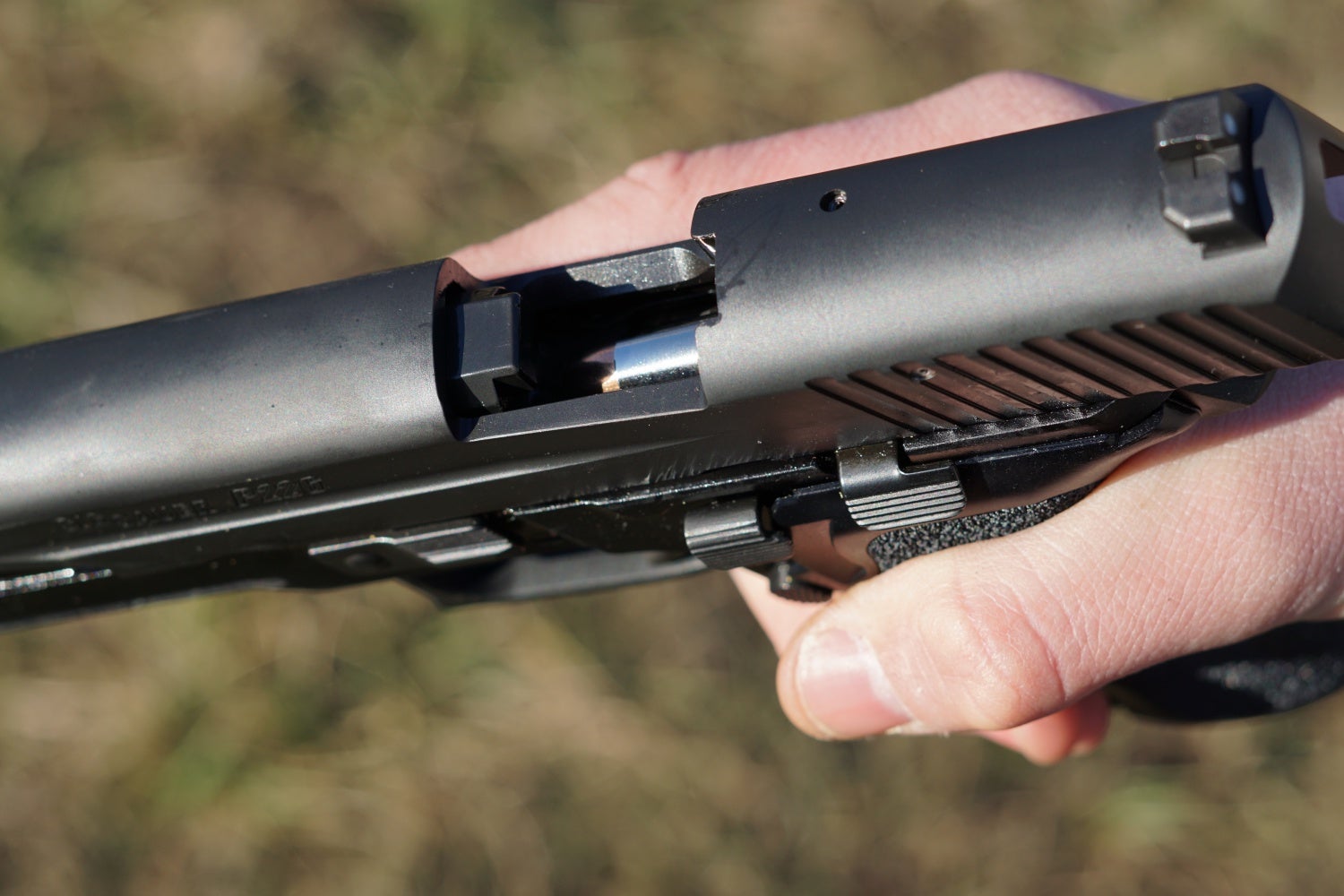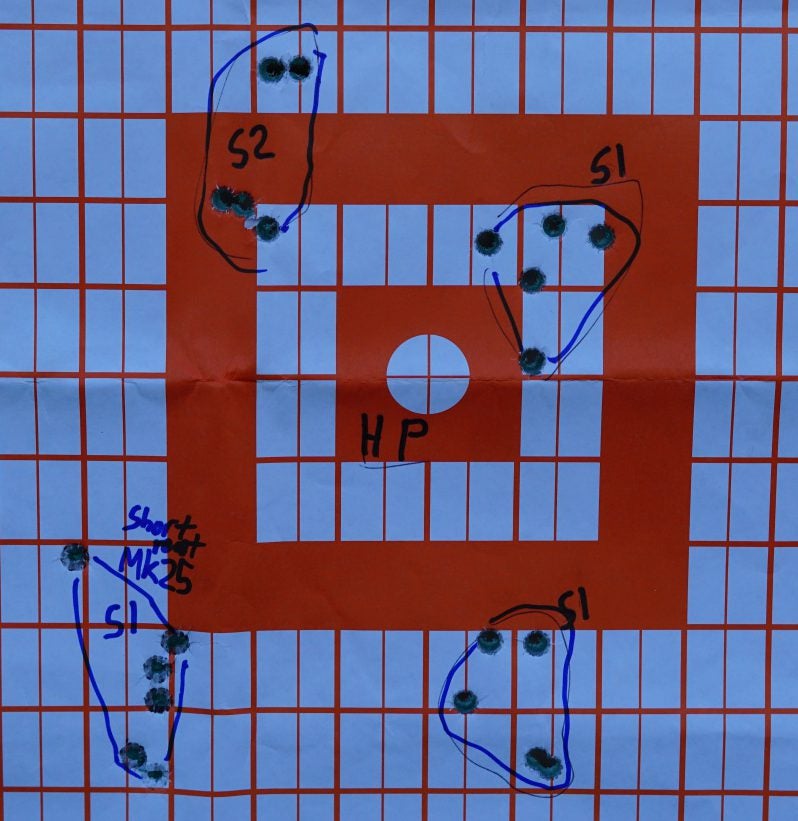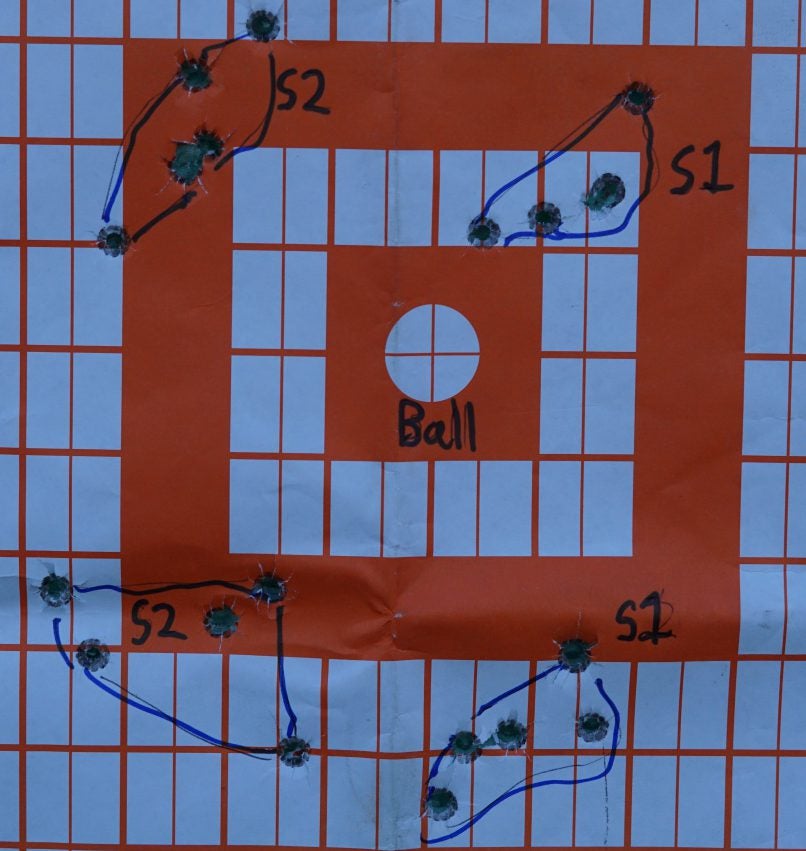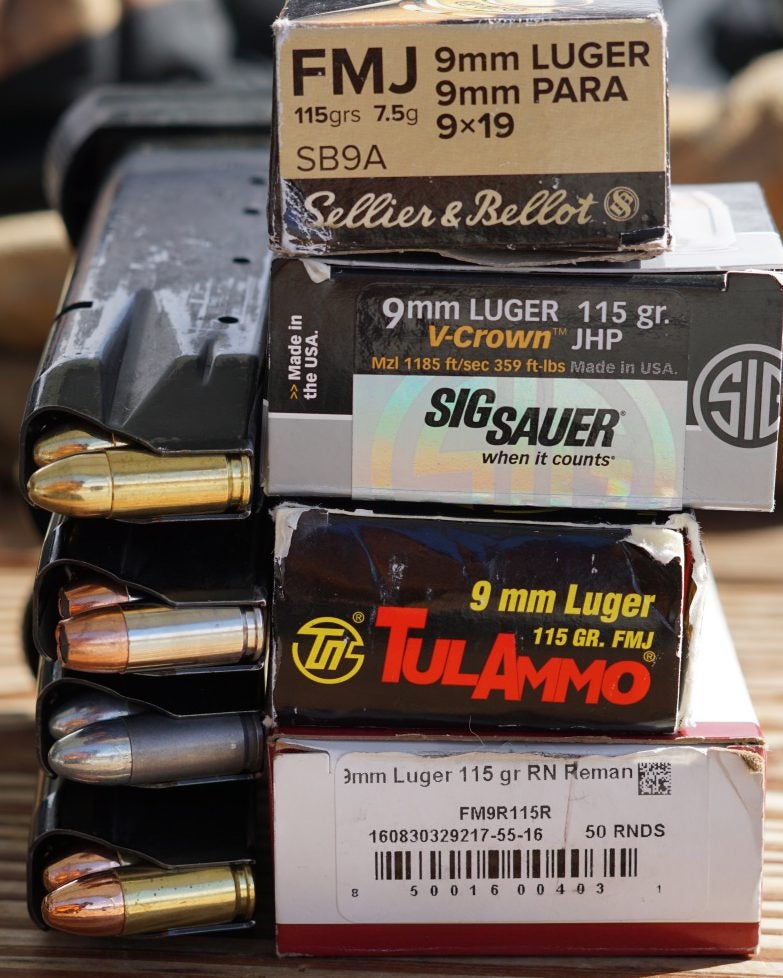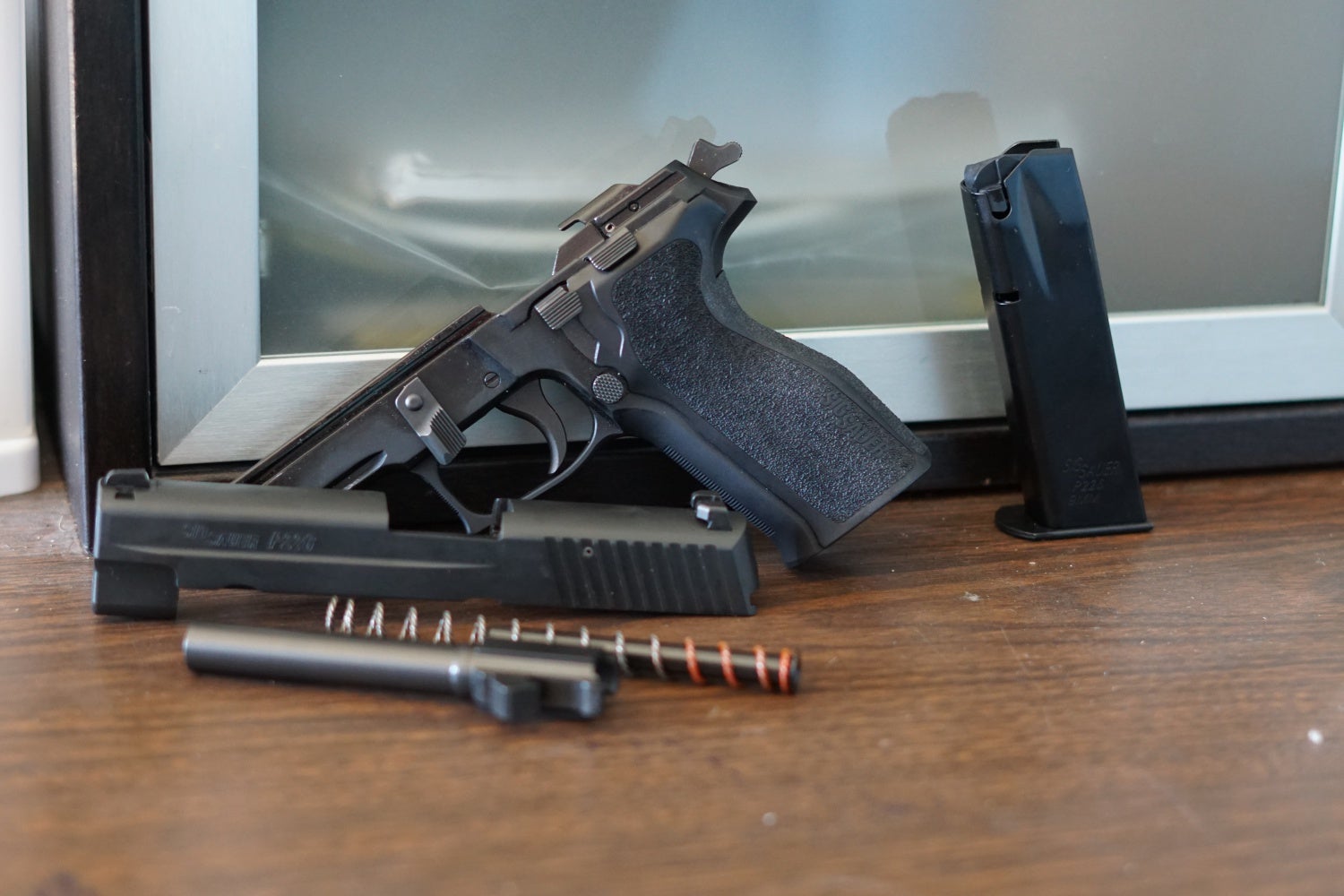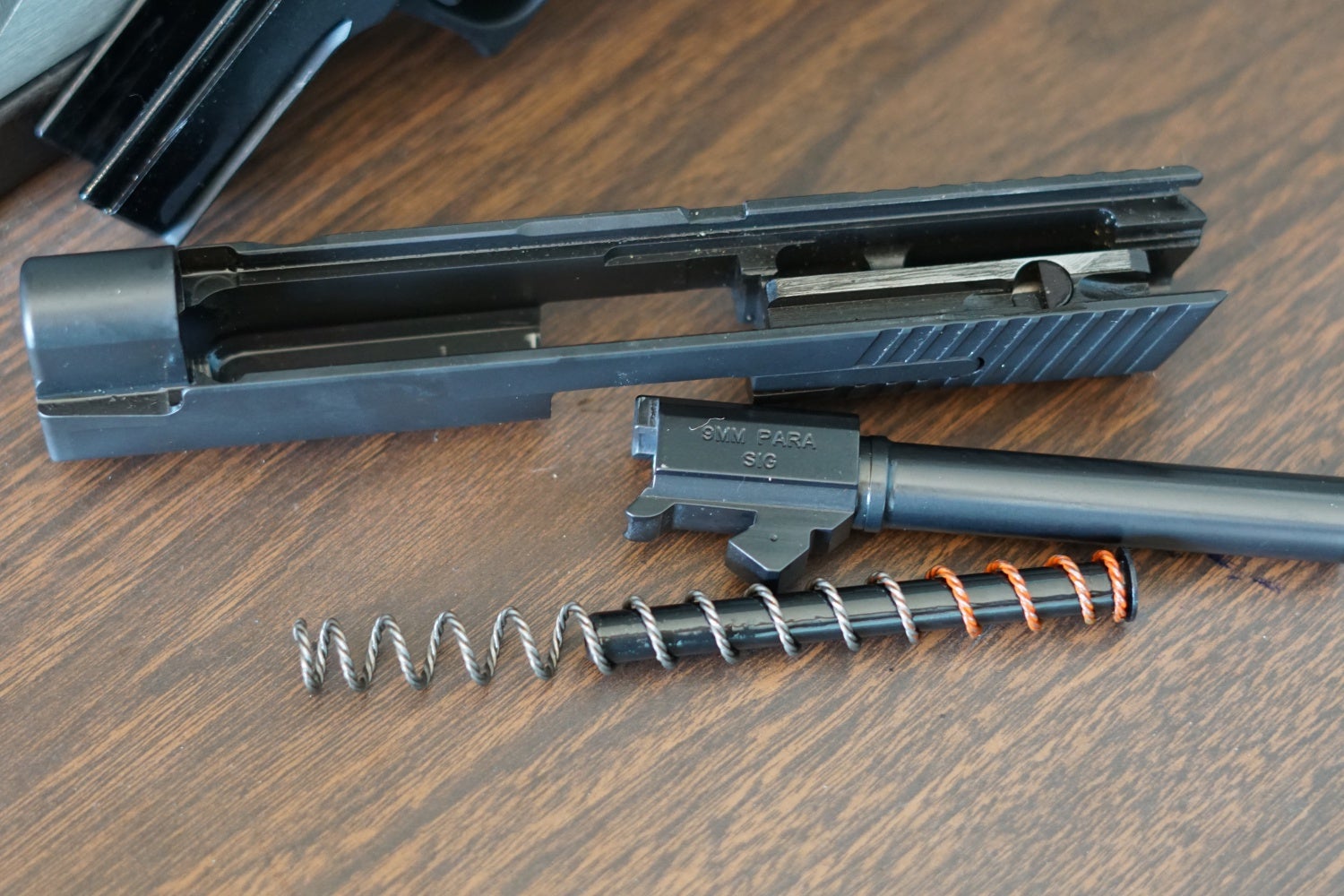Can the P226 really be improved upon? With the P320 winning the MHS contract, and the ever encroaching polymer framed, striker fired only handguns slowing taking over the market, is there really a lot left to compete against with the venerable P226 design? Sig Sauer thinks so, and definitively makes it a point with the companies flagship handgun, the P226 Rail in 9x19mm.
The original P226 was designed for the XM9 Service Pistol Trials in 1984, of course losing to Beretta. Ironically, the P226 pistol itself actually cost less than a Beretta, but it was the additional package of magazines, cleaning equipment, and servicing that lead to the price point of the U.S. Army being able to buy two Berettas for the price of one Sig. Nevertheless, the handgun was introduced to the civilian market, and began to take off very rapidly. Today, the P226 has morphed into a number of variants, such as the compact P229, the .45 ACP P220 & P227, and even a subcompact .380 ACP P238 among numerous other entries into the handgun market. However, the P226 has probably been the most popular of all, being offered in all sorts of different finishes, grip styles, and magazine options. Handguns were initially made in Europe, but manufacturing has since come over to the New Hampshire-based facility. Initially quality was superb with the European-made Sigs, but when manufacturing was moved to the United States, quality control took a hit, and these handguns have suffered. But, through a number of changes at Sig Sauer’s headquarters in the U.S., the U.S. made handguns are on par or even better than the European ones from the 1980s and 1990s.
For this review, Sig Sauer sent TFB a very standard, and plain jane P226 Rail, with the company’s current grip offering. The box contained the normal assortment of manuals, care instructions, a cleaning rod, and two magazines. In addition to the handgun, Sig Sauer also sent us some V-Crown 115 Grain JHP, and some of the Elite Performance line of 115 Grain FMJ rounds to test as well. Through a range trip, using the handgun in various drills, accuracy testing and then using the handgun in an IDPA match, we wrung both the handgun and the ammunition through its paces. In addition to the Sig Sauer ammunition we had on hand, we also used reloads from Freedom Munitions, steel cased from Tula Ammo, and factory loads from Sellier & Bellot. The Sig Sauer ammunition was strictly used in the initial range testing for accuracy and holster drills, while the other manufactured ammunition was used in the IDPA match.
First Impressions
My first impressions upon receiving the handgun was the same initial impressions I always get when I gaze upon a Sig Sauer product, which usually well-founded respect of a handgun made right. This P226 was right from the factory and brand-new. The handgun even had whatever finishing grease is applied to it when it is boxed up. For those who aren’t familiar with the P226 series, the magazine capacity is 15 rounds, there is no manual safety, and the trigger is a Double Action/Single Action operating system with a manual decocker located on the left side of the handgun by the slide release. Some new shooters often get the decocker confused with the slide release, but really simply pointing it out, or a range session is all it takes to not mix the two up at all. 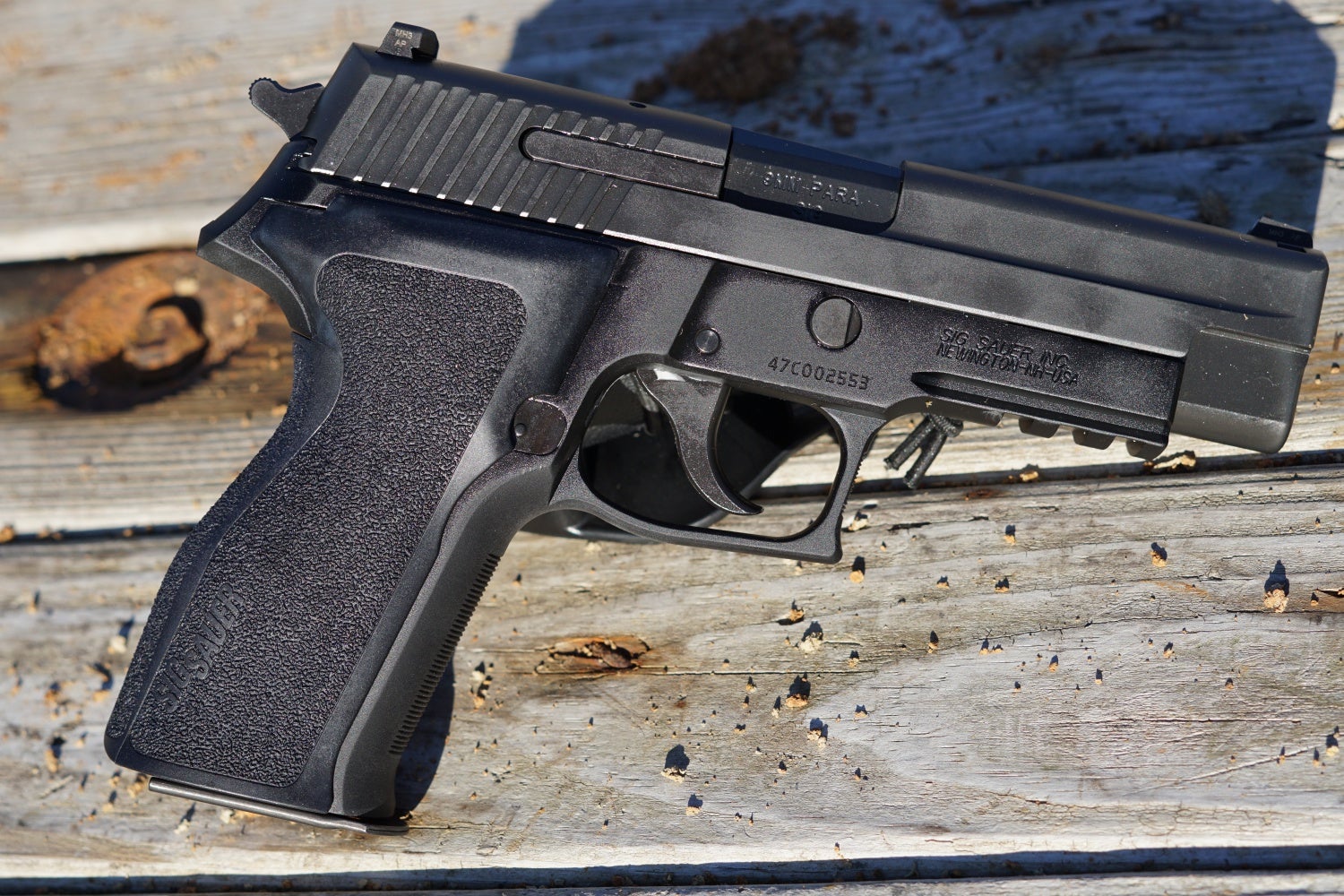
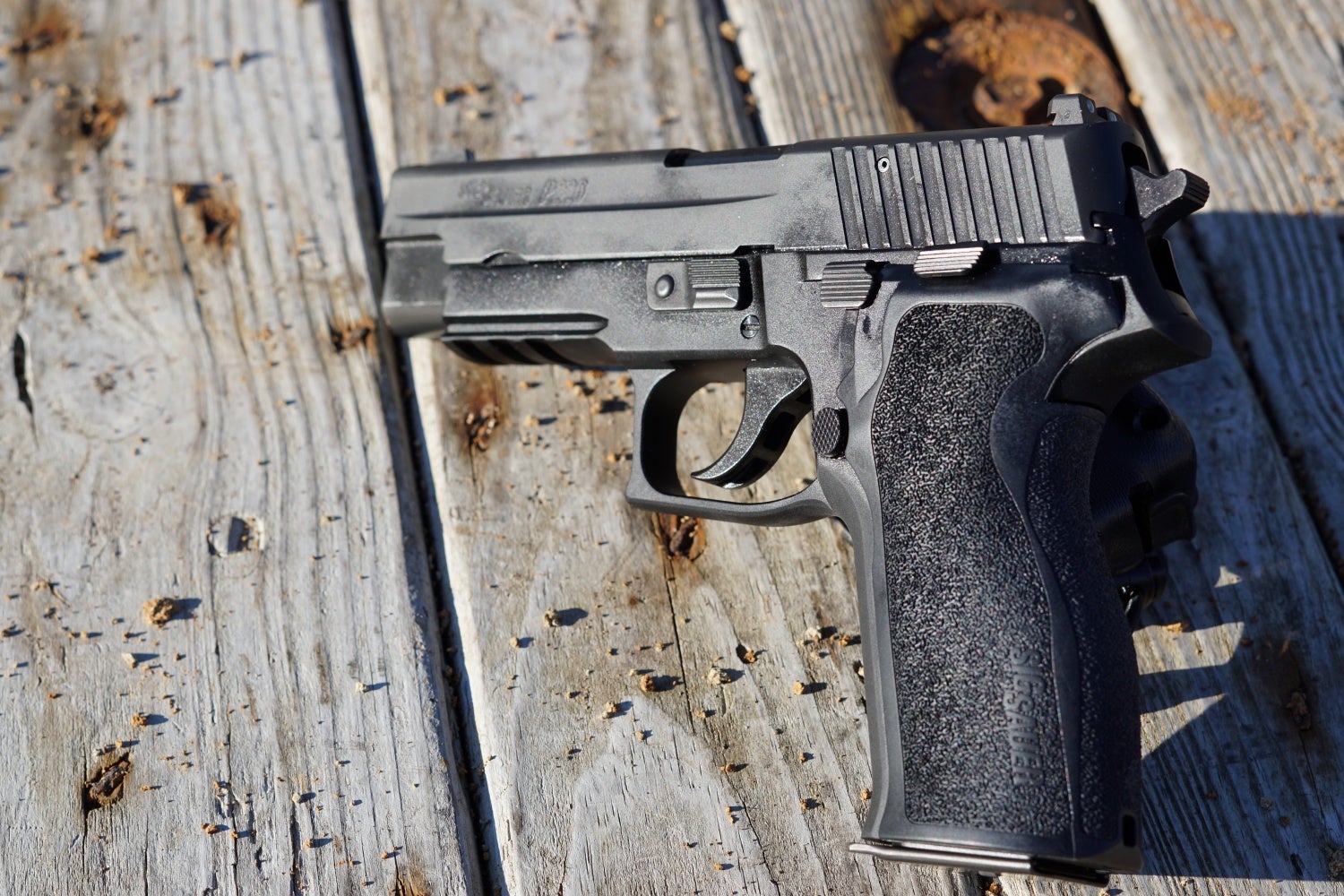
Grip Curvature
The biggest change I like from the earlier P226 is the grip curvature. Earlier 226s have very traditionally straight walled grip like most handguns introduced in the 1990s and prior have. It never really affected me much with my personal P229, but realizing the capabilities actually out there with this reformed grip opened my eyes. For those who have carried a P226 for a long time, maybe even since the 1990s, the newer grip curvature will make a huge difference in handling the handgun. Upgrading to a new P226 wouldn’t want to miss looking at this particular feature. Why I specifically liked it was because I could get a much firmer wrap on the grip while the handgun was holstered, thus making presentation better as well. In addition, actually shooting it allowed my right hand to wrap itself better around the grip of the handgun.
Rail Section
The P226 has a Picatinny rail section, but it is Sig Sauer’s rail which has a sort of curve to the rails and not a flat section like a true M1913 Mil Std Picatinny rail like the company’s Mk.25 has. Regardless, the overwhelming majority of lights on the market can be fitted to the rail without any issue, as is evidenced by this Streamlight model.
Luminous Night Sights
The P226 comes with luminous sights, which I assume are from Trijicon unless the company sources them from elsewhere. The luminous sights help with day acquisition because of the while circular appearance, but at night is where they really shine with the below photograph taken in total darkness in my room. In addition, the rear sight has a 90 degree angle, and thus can serve very well in operating the slide with the heel of a shoe or other flat object should a shooter’s support hand become incapacitated.
The Only Issue: One Failure to Feed
I have to be honest here, and in doing so, the only issue I can report from the range day AND the IDPA Match, was a single Failure to Feed malfunction. This was while shooting the first several magazines of JHPs, when I chambered the first round on an empty chamber. Now, I don’t see this as a large issue at all, because the gun was NIB from the factory, and certainly within the usual 100-500 round break in period recommended from most manufacturers when it comes to purchasing new handguns.
When the malfunction happened, myself and a buddy proceeded to randomly check all the JHPs in the four 25 round boxes that were delivered. We did this by loading rounds from each box into four different magazines of varying capacity and make. Some from Sig Sauer, others after market. Each magazine would only have two randomly selected rounds at a time. Then we loaded the first round into the barrel on an empty chamber, while loading the second round in on a slide rack. This way, we were not only checking each box of ammunition, but also each magazine, thereby trying to eliminate as many errors as possible through the experiment. Throughout the loading of all these rounds, I can happily report that the initial malfunction was not replicated at all. And neither did it happen with the rest of the JHP ammunition in the ensuing range session and the match.
Thumb Over Slide Release
This certainly isn’t a problem with just the P226, but plagues other handgun designs. If you have a high firm pistol grip on the P226, sometimes a shooters right thumb will inadvertently rest on the slide release, thus preventing the slide release to not function properly when the last round has been fired. I alleviate this by resting my right thumb over the web of my left hand, thus removing the issue before it even begins. However, you have to be cognizant of this issue with the P226 because it has a slide release and not a slide lock, which tends to be less of a concern because of the minimized dimension.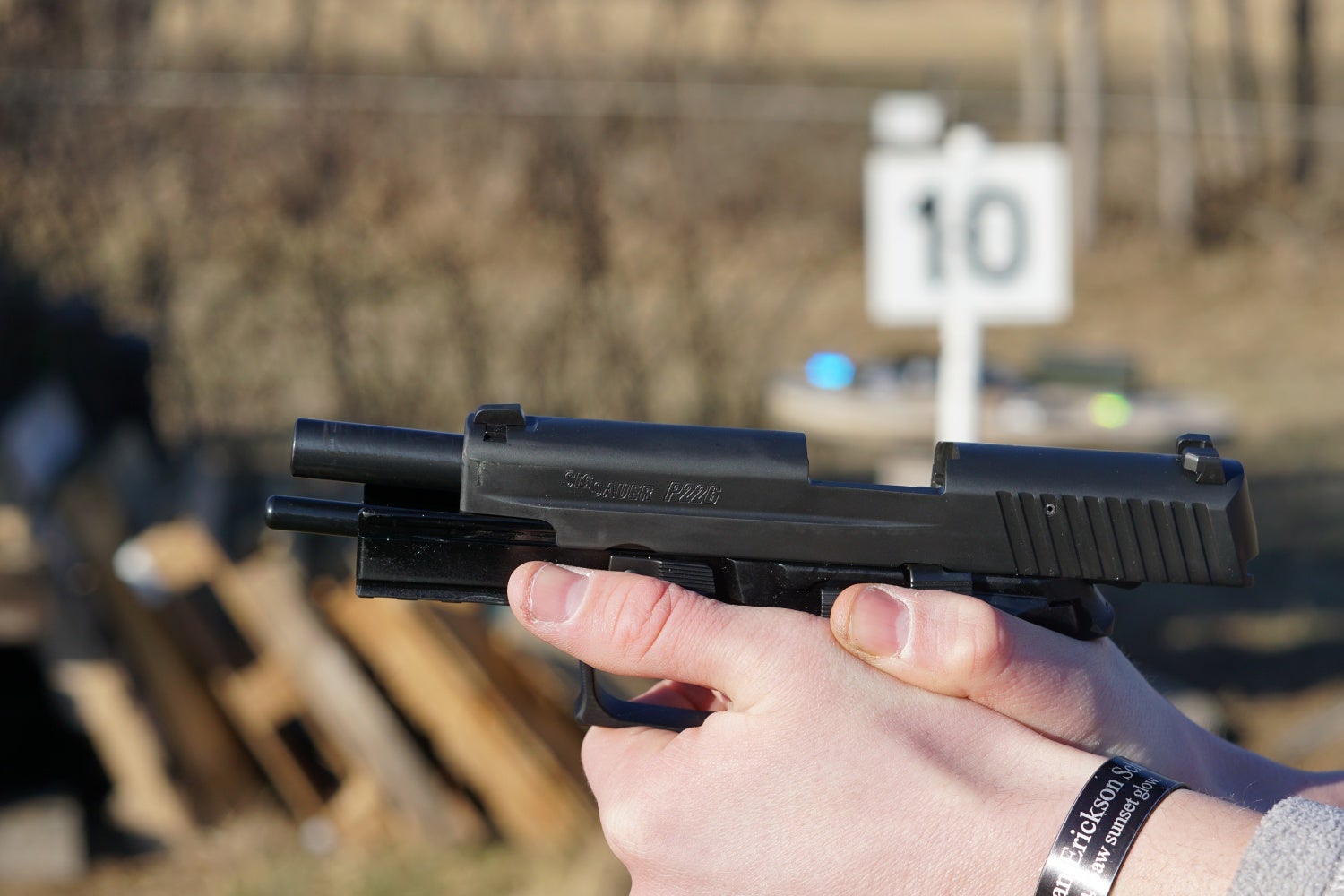
Accuracy Test
We shot the multiple five round groups with the P226 at 10 meters, two handed with both the FMJ and JHP ammunition, first round on double action and the ensuing four on single action. The overall size of the groups was 2 inches, regardless of ammunition source. My groups shot consistently low left, while my buddies shot either center or to the right. A front sight adjustment and a change of rear sights would be in order if we wanted the gun shooting true center mass every time. Let it be known that we were aiming for the corners of the orange square with each group. However, when it comes to ammunition, the P226 Mk.25 actually outshot the rest of the groups with the factory P226. The Mk.25 did have a short reset trigger so that must have come into play.
IDPA Match
I took the P226 to an IDPA match held at Atlanta Conservation Club outside of Indianapolis. Holster used was a Safariland ALS with the quick release tab on the left. There I used a number of ammunition sources, all 115 grain loads from Freedom Munitions. Sig Sauer JHPs, Tula Ammo, and S&B were used in particular. Often I loaded and used different magazines of different ammunition, mixing it up to see if any one would malfunction or cycle worse than the other. And at the end of the day, all the ammunition worked fine in the P226, without a single malfunction. The only issue was the thumb over slide release as I mentioned earlier, but that’ll always plague me with the P226 and P229 series.
Below is video taken from the shoot.
Disassembly
The handgun is disassembled by locking the slide to the rear, and pivoting a takedown lever clockwise until it reaches the 6 o’clock position. The slide can now be released forward under spring pressure, thus allowing it to come fully off and allowing the barrel and recoil spring to be taken out. Currently there isn’t a model of the P226 with an ambidextrous or dedicated left hand magazine release.
Updated Magazine?
With the current way things are moving in the shooting crowd, I believe the magazine could be updated for the 21st Century by way of the floorplate specifically. Although the magazine functions flawlessly and worked fine, I think if the magazine came from the factory with a wider and larger floorplate that could even increase capacity shooters would be pretty happy. A larger baseplate allows for better manipulations and magazine changes because of the added surface area a shooter’s hand can grab ahold of on the magazine. These older magazine floor plate might have been fine for earlier times, but I believe shooting philosophy has changed a great deal, and is putting emphasis on the individual shooters ability instead of the mass actions of a large police force or military.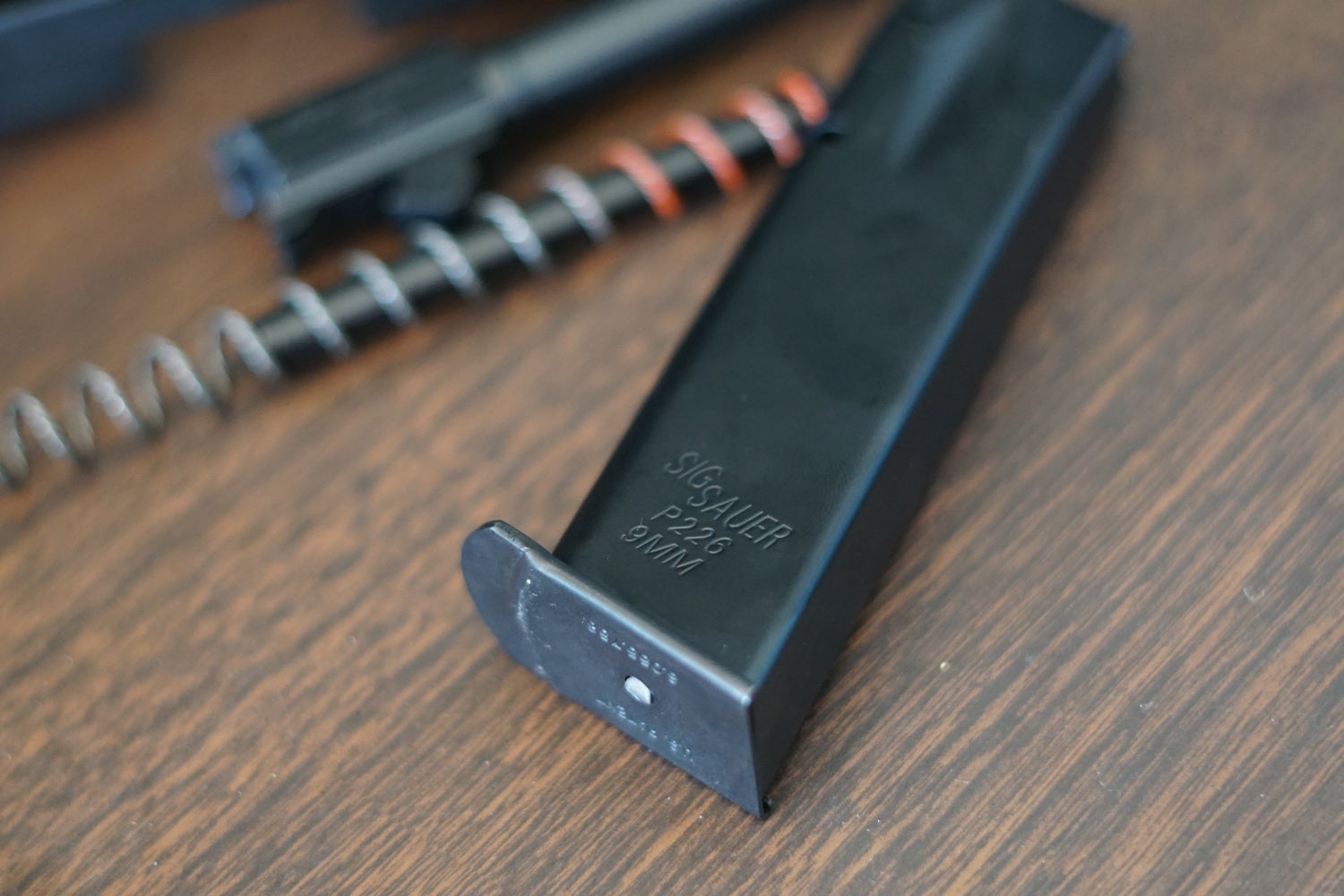
Pictured below are after market Mec Gar magazines that were also tested with the handgun.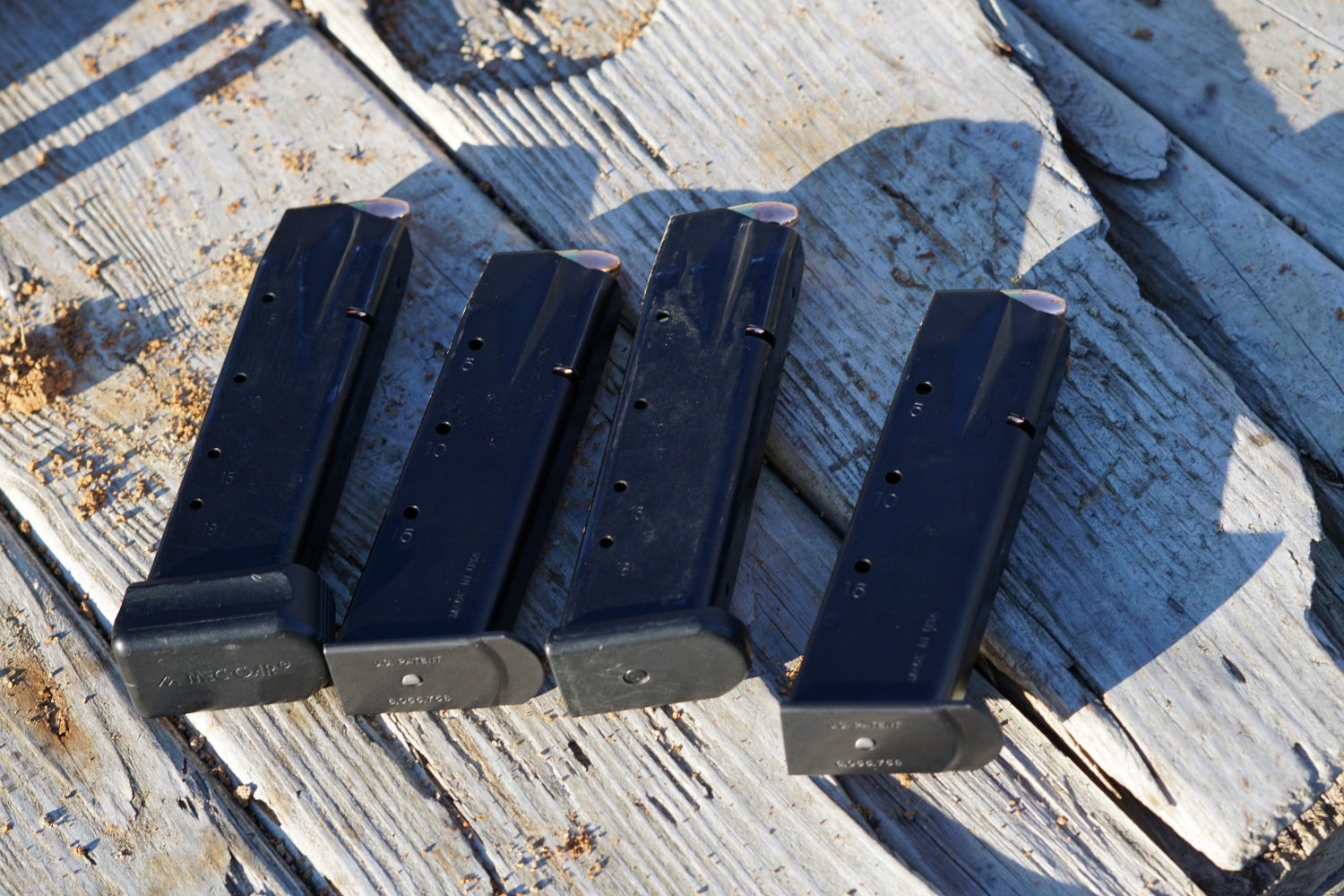
Conclusion
If you don’t want a polymer frame strike fired handgun, and aren’t about to jump on that bandwagon yet, then the Sig Sauer P226 is a worthy contender for the majority of us that want to remain on that external hammer, DA/SA platform for the time being. The various issues associated that we encountered with the P226 can easily be alleviated with proper grip placement and after market magazines. In addition, if you don’t want the added features like the Legion series, or the various Nitron or Combat names, this plain Jane P226 can still be had in the sub-$800 price range, keeping it very competitive with other modern handguns on the market.
 Your Privacy Choices
Your Privacy Choices
